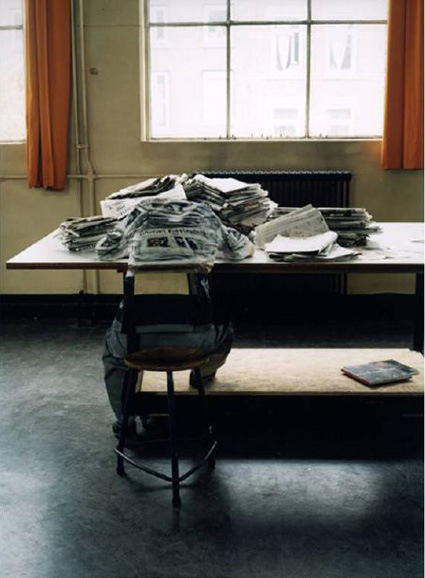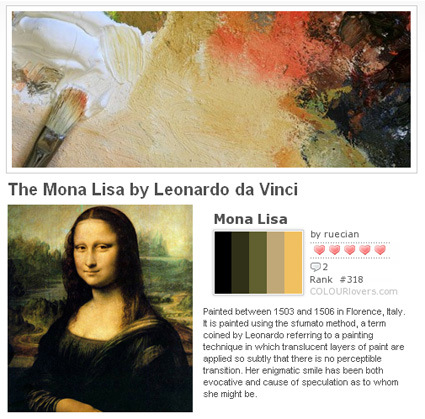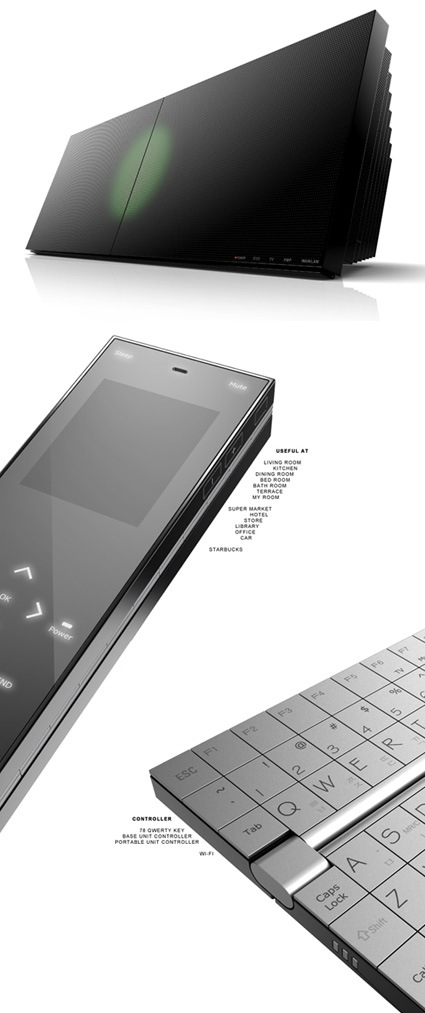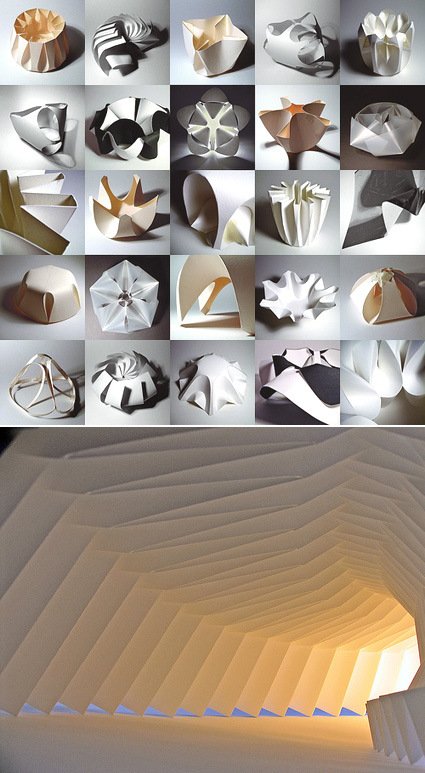
Would you like to have such a chameleon suit?

Would you like to have such a chameleon suit?

The Wired series of photograph struck me quite a bit. It’s a whole series of photos by acclaimed photographer Edward Burtynsky, who went about documenting China’s rapid growth through industrialization and manufacturing, capturing the human side of the production processes that statistics tend to conceal.
“these images are meant as metaphors to the dilemma of our modern existence; they search for a dialogue between attraction and repulsion, seduction and fear. We are drawn by desire, a chance at good living, yet we are consciously or unconsciously aware that the world is suffering for our success. Our dependence on nature to provide the materials for our consumption and our concern for the health of our planet sets us into an uneasy contradiction. For me, these images function as reflecting pools of our times.”
China as a rising global power has been perennial news – globalization talks inevitably talked about how China is a massive power and the world’s factories, about outsourcing, cheap manufacturing, etc. We’d even rattle off some statistics to prove our points. And for a long while, it seemed like we’re all familiar with the issues, and we might feel that we can debate and discuss on it like a pro.
It’s amazing how humans are stripped off their human qualities through uniformity – in these pictures, a very clear message is sent: “individual expressions are not tolerated. You are part of the industrial complex, engaged only to carry out a specific task”. This makes it a lot more manageable and controllable – quantifying and prescribing the very last bit of process, details, appearance and behavior that are allowed. Like sheeps in a flock, conformity and obedience is the rule of the day. Mass-produced goods made by legions of identical-looking workers (who looks like they were themselves mass-produced to the exact same specifications).
But these brilliant photographs also reminded me that, beneath all that statistics and projections, there are humans, very real humans whose lives are affected and affecting all these. When you talk about China and growth and globalization, it’s easy to lose sight of the reality and the physical world. These photos help to restore, or at least hint at, the sense of perspectives from the ground.

There aren’t too many details from the Times newspaper article, but I’m loving this make-over of the satellite dish to give a bright dash of fun and joy to an otherwise drab urban flat. By Dutch artist Peter doeswijk.
Incidentally, the hooks you see are for lifting heavy furniture up into houses through the balconies, as the stairwells are too narrow to fit them.
[Edit (Thanks Martien): “The artist’s name is Peter Doeswijk. The drawings were actually made by children. In this specific part of Amsterdam live a lot of foreigners. They use the satellite dishes to receive the broadcasts from their country of origin. Doeswijk printed the drawings on stickers which he put on the dishes. The stickers will stay on for a couple of months. The project gained a lot of positive response and publicity and the artist is considering making a business out of it.“]

Here’s a cool post of people taking classical paintings and converting them into color tones:
The world has seen thousands of artists and millions of great pieces of art, but we chose just a handful of pieces of art from some of greatest masters of painting to show a little of how they were inspired by color… or perhaps, how they inspire us with color.

iriver was for a long while the “also-ran of the also-ran”: the followers with me-too products on the portable mp3 player scene. Their former company name, iRiver, didn’t help much in suggesting originality – it looked like they’ve pirated it straight off the iPod. (Actually the company was founded in 1999, before iPod’s launch in 2001. That’s probably why they’ve changed the company name from iRiver to iriver, dropping the capital R to shrug off the shadow of Apple’s “iProduct” naming convention).
I must say I was rather pleasantly surprised about iriver’s to-be-launched Life Unit – from the looks of it, this is positioned as a high-end entertainment hub that handles all the media you could imagine: music, movie, flash, photo, e-book, Wifi-streaming; it charges and syncs with their portable players; – you name it, they’ve covered it. They’ve also got Niro Nakamichi onto the team for sound design.
The aesthetic also looks exquisite and refined, though the friendly, rounded iriver logo does seem slightly awkward nested among the precise and pristine lines in the Life Unit. I’m particularly drawn to the flippable remote control – the touch screen controller opens up to reveal a finely-crafted Qwerty keyboard. All of this does suggest that iriver put a lot of attention into this product, and that could be just a suggestion of their ambitions to come.
This actually triggered me to rethink and reposition the new roles of digital media and the devices – that will come in a later post soon!

Ah, one of those things that make me go “why didn’t I think of that?” – by Busetti and Garuti.
[via swisssmiss]
The last thing I thought I’d ever be interested in on the planet is opera (the art, not the browser). But Paul Potts, the winner of the talent show Britain’s Got Talent enchanted me – somewhere between his earnest delivery and incredibly emotional singing voice, I think he captured the dreams and imagination of the millions who voted for him, and many more (like myself).
He’s a mobile phone salesman – looking nerdy, with the missing front tooth – these definitely doesn’t make the best first impressions for a talent contest. When he starts singing, you might go “oh well at least he’s not bad”. But when the tune turns into some of the most expressive parts of the song, my hair stood – and it’s just a great feeling looking at how he has remained humble and deeply appreciative of his talents and the support he’s got, and if you look through some of the clips, seeing him grow in confidence in himself.
This is definitely a great, welcome break from the typical talent shows whose sole ethos seem to be superficial glamor – this competition truly brought out a winner who’s talented, and definitely inspiring. Bravo!
I stumbled onto a great article on the current state of branding for products:
So you got line extensions, big ads, expensive logos, brand onions. You got branding. And most of it was as intellectually rigorous as phrenology. Actually it was probably more like Scientology; it was somewhere between a fake religion and a false science.
…
The dismal nature of the branding science has started to become clear to business recently and they’re starting to vote with their investments and appointments. They’re turning from the people who create perceptions of value to the people who create actual value – the designers, technologists, innovators. Hence branded utility, hence ‘design is the new management consultancy‘, hence the current Business Week heroes being IDEO and Ives not CHI and Chiat Day. Hence the limited tenures of CMOs. Hence the rise of communications businesses that can actually make stuff rather than just think of stuff.
If you take Business Week as the sole, definitive guide to the business landscape, you might have the impression that design (and design thinking) has indeed become the zeitgeist, tour-de-force of the new world. Design is increasingly being recognized as much more than simple surface styling – in fact it’s not so much the design skills that are attractive to the suits, but more the design approach, attitude and thinking: for instance the natural emphasis design places on the end user. Personally I guess it’s about time too – years of management theories have focused a lot on the processes – cheaper, more efficient, quality management – supply-side intervention: the tide has turned onto the demand side.
And yet, amidst this hype about incorporating design into the corporates, there lies a great fundamental risk as well – as the “design” buzzword gets applied to every field and where everybody wants to own a piece of the “design” action to somehow feel more important and strategic; every other product launch is termed as the greatest innovation (EVAR!); every little tweak to the systems is labeled as an overhaul after extensive usability study and re-design; and perhaps most pervasively, where every management action/decision is heralded as a consequence of strategic design.
At some point, design in its true sense would have been diluted beyond its original context. By its very nature, design usually leverages across disciplines – unifying and synthesizing a multitude of factors into a coherent, appealing whole. That requires tremendous vision and authority on the designer. And yet, the essence of design: insight, original thought, clever solutions, attention to details and users – might just get left behind or placed on the backburner in favor of quicker, more painless adoption of design into current corporate cultures – “let’s not shake too many trees or too many monkeys would fall”.
Herein lies the greatest danger: as much as it is being trumpeted the loudest, design might fundamentally not be given the room nor its role to play – and are but relegated to mere surface patching of corporate visions in tune with the latest fad – “design”.
That, perhaps is the time when the term “design” loses trust and equity, itself becoming a fad branding: somewhere between fake religion and false science.

A clever ad by Oogmerk (which I presume is an eyewear company focused on creative, funky glasses) – it’s true how perceptions can easily changed by eyewear. Incidentally if you’re interested, the Opus design competition is on now and their theme is also on eyewear being tools to enhance faces.

Whether you’re into architecture or not, I’m sure you can appreciate the astounding beauty and sculptural properties exhibited by some of these works by Richard Sweeney from the UK. It’s really amazing how he caresses the simplest of materials – mostly 220gsm cartridge paper – to take on form and substance that look much more complex and seems to me ripe with possible applications in architecture. In his own words –
This demonstration of art through engineered structure is truly inspiring, and is a major influence on the way I go about producing my work- to create objects that are simple to construct yet complex in appearance, and are efficient in the way they are produced, both in terms of construction time and material use. The greatest example of this principle- achieving the most from the least- are structures in nature. As in the greatest architecture, natural forms show patterns of repetition, whereby the very most is made out of the least material and energy possible, to create forms that appear amazingly complex, yet are based on very basic units and patterns of growth- these are objects that have beauty on all levels, from the way they are constructed, to the appearance of the final form.
Be inspired by his Flickr set and his personal site.